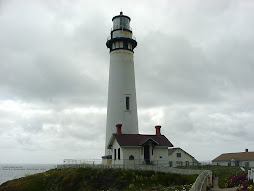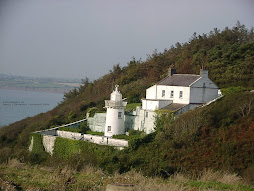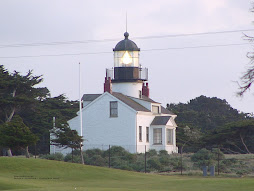Top 60 Boating Tips by Boating Magazine
Saturday, October 25, 2008
The United States Coast Guard
From the Official US Coast Guard Historians Site:
"The United States Coast Guard, one of the country's five armed services, is a unique agency of the federal government. We trace our history back to 4 August 1790, when the first Congress authorized the construction of ten vessels to enforce tariff and trade laws and to prevent smuggling. Known variously through the nineteenth and early twentieth centuries as the Revenue Marine and the Revenue Cutter Service, we expanded in size and responsibilities as the nation grew.
The service received its present name in 1915 under an act of Congress when the Revenue Cutter Service merged with the Life-Saving Service. The nation then had a single maritime service dedicated to saving life at sea and enforcing the nation's maritime laws. The Coast Guard began to maintain the country's aids to maritime navigation, including operating the nation's lighthouses, when President Franklin Roosevelt ordered the transfer of the Lighthouse Service to the Coast Guard in 1939. In 1946 Congress permanently transferred the Bureau of Marine Inspection and Navigation to the Coast Guard, thereby placing merchant marine licensing and merchant vessel safety under our purview.
The Coast Guard is one of the oldest organizations of the federal government and, until the Navy Department was established in 1798, we served as the nation's only armed force afloat. We continued to protect the nation throughout our long history and have served proudly in every one of the nation's conflicts. Our national defense responsibilities remain one of our most important functions even today. In times of peace we operate as part of the Department of Homeland Security, serving as the nation's front-line agency for enforcing our laws at sea, protecting the marine environment and our vast coastline and ports, and saving life. In times of war, or at the direction of the President, we serve under the Navy Department."
When Hurricane Katrina hit in 2005, 60,000 people were stranded in flooded homes and on rooftops, requiring rescue. Of the total evacuations, the Coast Guard saved more than 33,500 people, including over 9,400 medical evacuations!
During every war and conflict, the Coast Guard has been there. You don't hear much about them because they are not a huge service, just a small group with a big mission that they do very well. When arms and munitions smuggling along the coast and waterways of Vietnam needed to be stopped, the Coast Guard was called in performed marvelously, with the last combat unit remaining until August 1970. During every conflict, from its inception in 1790 and the War of 1812, through World War I, World War II, Korea and now Iraq and Afghanistan, the Coast Guard has always been there and lives up to its' motto, Semper Paratus...Always Prepared.
There has long been a custom that was told throughout our history in the Coast Guard, maybe it's written somewhere, and maybe not, but in the hearts of each and every "Coastie" as he or she takes the oath of service, and remembered each time the call goes out for help:
"The book says you have to go out...it doesn't say you have to come back..."
In memory of seven shipmates that didn't come back from Vietnam...may fair winds always be at your backs and calm seas beneath your feet, the sun shine warm upon your face. In the tradition of the keeper of the light, keep the beacon shining bright for all of us who will follow you home.
Wednesday, October 22, 2008
WHO YA GONNA CALL?
Wait a minute, you say. We pay taxes for these services. Well, you're partially right there, but budget cuts and funding reductions have required many governmental agencies to reduce their services to the public. The Coast Guard had many additional duties added over the years, without adequate funding to support all their activities. Cuts needed to be made, and unfortunately, recreational boating had to bear, what would seem, a disproportionate share of the service cuts. And, commercial vessels fared no better. The primary mission of the Coast Guard always has been, and remains, safety to life on the high seas. If a situation at sea presents a direct and imminent threat to life, you can count on the Coast Guard to respond. But, they are not a commercial tow or salvage company. Commercial towing companies have done battle over the years with governmental agencies, accusing them of taking away their livelihood by offering free services. Deep budget cuts and liability issues settled the matter. The Coast Guard and other governmental agencies wouldn't be providing services offered by the private sector.
This also holds true of the Harbor Police. Their primary mission is law enforcement in San Diego Bay. They will also respond when there is an imminent danger to life, but, like the Coast Guard, they are not a commercial tow or salvage company. It isn't that they don't want to help, simply that economics and legal issues preclude any help that the private sector can provide. The Harbor Police, and the Coast Guard, will stand by if needed, until commercial help arrives, and assist to reduce danger to life, but will not perform commercial services.
So, now where does this leave you, the recreational boater? Actually not that bad off, so long as you recognize the differences in services offered. and avail yourself of those services judiciously. Most commercial tow services provide towing, ungrounding, dewatering, salvage and other related services, but be prepared to pay. These services can be very costly. Vessel Assist, SeaTow, and perhaps others, offer towing and other services on an annual fee basis, similar to the auto club on shore. Be sure the one you choose provides you with the benefits you want, such as towing to your port of choice, and the coverage area fits your needs. Boat/US offers members a basic tow allowance as part of membership, with higher limits available at an additional cost. Some marine insurance policies can have towing added at an additional cost.
The main point is knowing who to call, and when. If there is a matter of safety to life, including sinking, fire or medical emergency, call the Coast Guard immediately. If you need a tow, run out of gas or are grounded, you'll need a commercial service like those listed above. You can still call the Coast Guard, but you'll be referred to a commercial service. And. a word of advice: If you're in doubt as to the seriousness of the matter, or if you think the problem will likely escalate into a life threatening emergency, call the Coast Guard first. They will get the details and advise you of the proper party to handle your situation. They'll even contact a commercial service for you, if needed.
Look at this philosophically; you wouldn't expect the Highway Patrol to tow your car home, nor the National Park Service to tow your RV home. So why expect the Coast Guard to tow your boat back to port. The days of free services are gone forever, but you do have choices available to help you enjoy a worry free boating season.
Safe Boating.
HOW HIGH"S THE WATER, MAMA?
Like Murphy, there are a number of SafetyDoc's personal laws of physics that pertain to underwater objects:
1. Boat parts, such as keels and propellers, tend to gravitate toward underwater objects that hold great destructive power.
2. The damage caused by an underwater object is inversely proportional to the value of the part struck, times the difficulty of replacement. I can guarantee that if you had a five dollar plastic propeller, removable in thirty seconds or less, it would survive every grounding and last forever. However, your four hundred dollar propeller and eight hundred dollar stainless shaft, removable at great expense, won't survive the smallest sandbar unscathed.
3. Objects in the water have a destruction ratio equal to a sum of their mass times hull speed. Meaning, that the harder you strike the object, the greater the damage, unless you actually intended to sink your boat, in which case there will not even be a scratch on the running gear or the hull.
4. Sand bars only shift when you approach. They lie dormant until the moment your vessel approaches, and insidiously change position to snag your keel or running gear as you pass over.
5. Buoys marking shoals don't. The shoal is always located somewhere off the buoy, and their location authenticated by the crunching sound of fiberglass, or the metallic grinding of what was your propulsion gear.
Speaking of depths, some folks don't realize their depth finder transducer is located at the transom, stern, or at best, midships in the hull. Since the "sonar" signal basically radiates straight down in a cone shape, you're already over the obstacle when the depth finder reads too shallow for operation. I've heard that familiar depth alarm many times. Strangely, it sounds like Oh, S---!
Seriously, many groundings are simply embarrassing, while others can have tragic consequences. You've all heard the warnings not to dive into unknown waters. Same for boats, look before you go.
Safe Boating.
WHERE AM I?
Not an unusual scenario. Many people see GPS or LORAN (often called "navionics") as "black boxes" and marvels of technology, and fail to read the instructions before leaving the dock. For example, one boater entered his position at a marina on San Diego Bay as his "home" location. The next, and only position he entered was his favorite fishing spot, about 12 miles west of Mission Bay. Not a problem on a clear day, but if he were trying to retrace his route blindly in a fog, these readings would lead him smack into the rocks or the beach. Remember, GPS cannot in itself develop courses around obstacles, and Point Loma is a very big obstacle to cross in a boat.
GPS and LORAN can be compared to an electronic road map. You cannot simply draw a straight line between two points across the country, and expect to get to your destination by driving that line. (Hummvee owners excluded). Same with GPS and LORAN. You need to route out your trip with charts and using lat/lon bearings or TDs, set a course. Each change in direction, whether to bypass an obstacle, or a change in heading or direction, requires a new "waypoint".
Waypoints entered off charts are best corrected with YOUR actual location when your vessel reaches the waypoint. In this manner, your stored information will be accurate as of the day you enter it, not as old as months, or even longer, before your chart went to press.
Navigating with today's electronics does not eliminate charts. Even the electronic maps do not replace a well prepared chart, where you can plan your route visually, seek depths that are safe for your vessel, and make notes of changing conditions. The art of dead reckoning should not be lost, since when you are out of battery power for your navionics, you'll still need to pull out the old charts and work your way to port.
Finally, even if you do not enter anything into your GPS or LORAN, they're still very useful instruments. If the day comes you are in distress, you can precisely tell the Coast Guard your position. That is, if you remembered to bring extra batteries if you're using one of the hand held marvels!
Safe Boating.
SURFIN' THE (AIR) WAVES
Now, what is the correct way to request assistance? Call Mayday? or Mae West? No, the call depends on the urgency and nature of assistance needed.True emergencies call for the use of MAYDAY. Urgent matters not directly hazardous to life or property need PAN PAN. And even lesser advisories use SECURITY. You need to acquaint yourselves of the proper procedures now; when an emergency happens, it's too late.
Suppose you're disabled. Who is going to make that emergency call for you? Better take the time now to instruct the entire crew on proper radio procedure.
How about that FCC license, the one you were always going to send for? Better get your application in, and keep the temporary license on board. If you are caught transmitting on your VHF radio without a license, the fines are HUGE! The license fees have increased, but a license is now valid for 10 years from the date of issue. But, remember, the license is valid ONLY for the boat to which it is issued, and if you sell the boat, you need a new license.
Which brings up another point. When making application for an FCC license, you need to request licensing for all electronic transmitting equipment you now have on board, or reasonably expect to have during the licensing period. This includes your main VHF, handhelds, radar, single sideband marine radio, satellite communications, EPIRB, etc. The standard license covers one VHF radio and a 121.5/243.0 mhz EPIRB, but not the 406 mhz units, so be sure to add whatever you need.
And now you can make application on line at http://www.fcc.gov/ You'll need to register and then you can use the Universal Licensing Syatem. You can even pay for your license and do your renewals on line!
Safe Boating!
Thursday, October 2, 2008
Loop Head Lighthouse, Ireland

Wednesday, October 1, 2008
ANCHORS AWAY!
Many of you will want to take me to task for the headline to this article. You think that's incorrect terminology, and that it should be "Anchors Aweigh". Not, so. This article is about how people fail to anchor properly, and their anchor goes "away", usually for good.
All of you should know the importance of good ground tackle. The sound of the surf on the rocks at night is soothing, but not when you wake up, and although you anchored a mile offshore, realize your vessel is now in the surf. That's a bad way to learn surfing, and an even worse way to learn about proper anchoring equipment and techniques!
There are a number of reasons anchored boats fail to remain in a stationary position. Not in any particular order, they are:
- Anchor not heavy enough for the vessel size, or conditions encountered.
- Anchor wrong type for the bottom.
- Anchor of poor quality, bends, breaks or will not hold.
- Setting only one anchor when conditions warrant two.
- Insufficient scope of line for depth and weather conditions.
- Insufficient length, or no chain between anchor and anchor rode.
- Chain of poor quality, insufficient strength.
- Line of insufficient size or strength for load.
- Failure to secure bitter end of anchor line to a secure mooring point on vessel.
- Use of windlass brake to hold vessel, rather than mooring point.
- Poor quality line, deteriorated line or poor splices.
Fittings wrong type, strength or deteriorated.
Anchors and other ground tackle should be chosen for their holding power in the worst type of conditions you expect to encounter. Then, consider going one size up. So, if Murphy's Law is right, and conditions are worse than you ever imagined, at least you will have the best chance of weathering the storm unscathed.
I can't discuss the pros and cons of all available lines, and the proper line to use in every situation. That would take volumes, and an expert on cordage, which I am certainly not. But, line, including dock and anchor lines, should be of the best quality available. It seems ridiculous to moor a quarter million dollar boat with five dollar dock lines. Same for most polypropylene line. You know, that brightly colored line you bought in a discount store, that seems to always be splitting, with strands sticking out all over. That may be okay for occasional use on a play raft or dinghy, but I wouldn't bet my boat, or my life on it.
I have purchased what was alleged to be high quality nylon line, only to have it fray, abrade and deteriorate rapidly. Don't make that mistake. Buy the highest quality line available. You can still shop for price, but don't let low price entice you into low quality.
Line on a boat is like a parachute. When you need it the most is not the time to be wishing you had bought better quality. Then, it's far too late.
Safe Boating.












